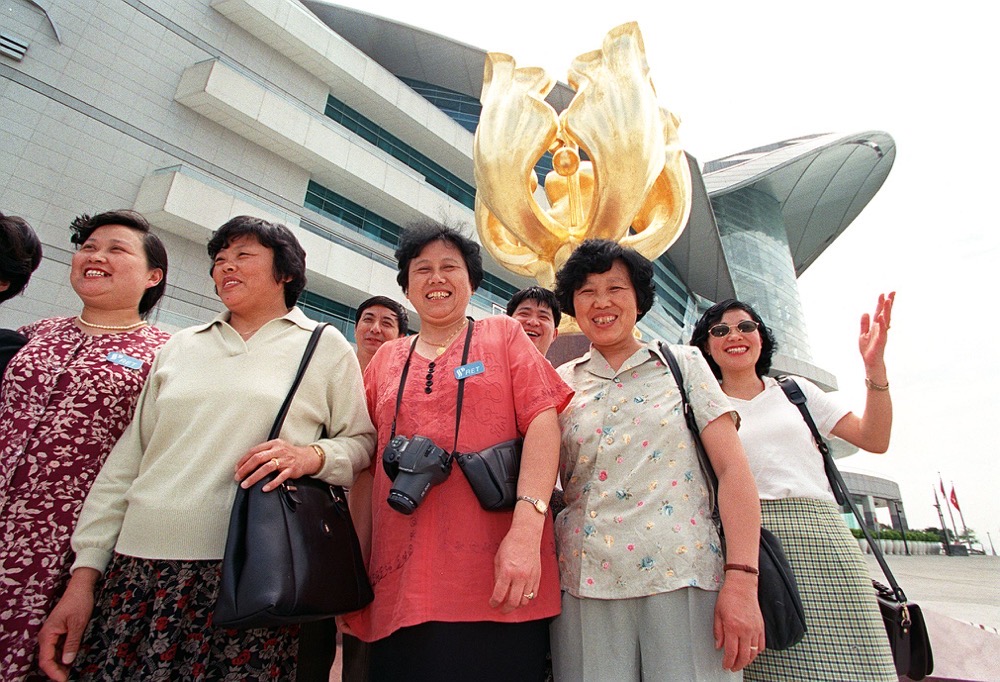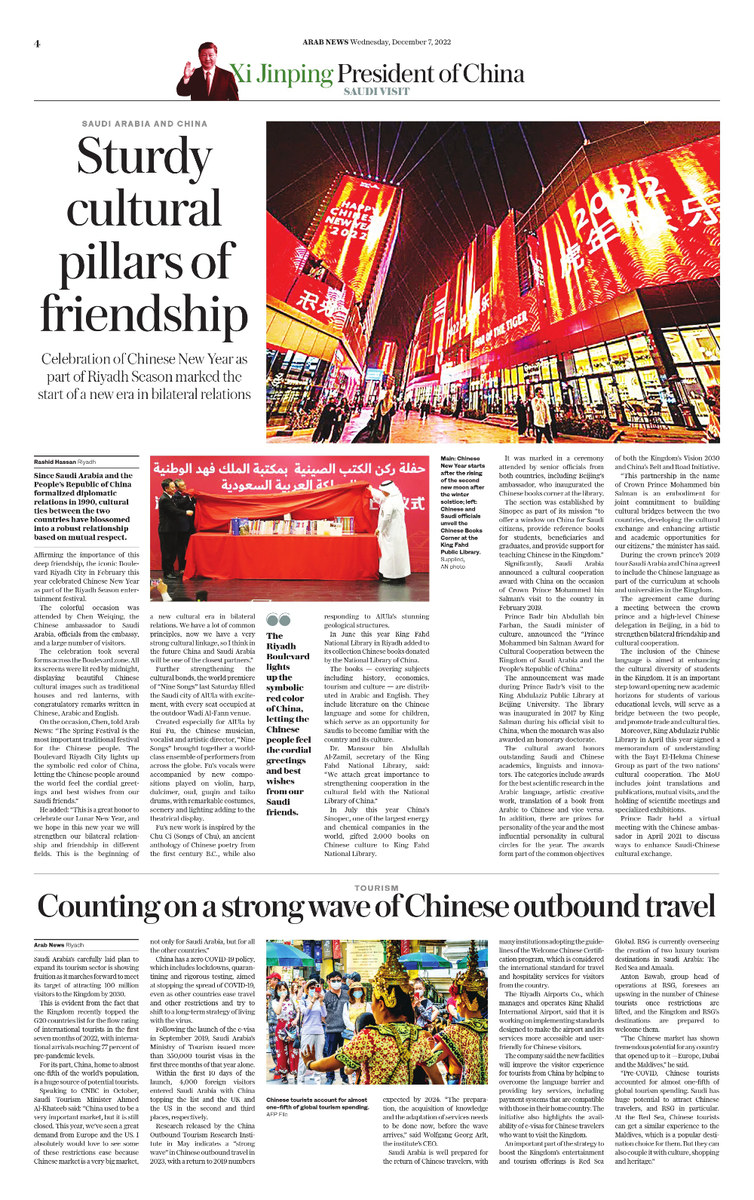RIYADH: Saudi Arabia’s carefully laid plan to expand its tourism sector is showing fruition as it marches forward to meet its target of attracting 100 million visitors to the Kingdom by 2030.
This is evident from the fact that the Kingdom recently topped the G20 countries list for the flow rating of international tourists in the first seven months of 2022, with international arrivals reaching 77 percent of pre-pandemic levels.
For its part, China, home to almost a fifth of the world’s population, is a huge source of potential tourists.
Speaking to CNBC in October, Saudi Tourism Minister Ahmed Al-Khateeb said: “China used to be a very important market, but it is still closed. This year, we’ve seen a great demand from Europe and the US. I absolutely would love to see some of these restrictions ease because Chinese market is a very big market, not only for Saudi Arabia but for all the other countries.”

China, home to almost a fifth of the world’s population, is a huge source of potential tourists. (AFP)
China has a zero COVID-19 policy, which includes lockdowns, quarantining and rigorous testing, aimed at stopping the spread of COVID-19, even as other countries ease travel and other restrictions and try to shift to a long-term strategy of living with the virus.
Following the launch of the e-visa in September 2019, Saudi Arabia’s Ministry of Tourism issued more than 350,000 tourist visas in the first three months of that year alone.
Within the first 10 days of the launch, 4,000 foreign visitors entered Saudi Arabia with China topping the list and the UK and the US in the second and third place respectively.
Research released by China Outbound Tourism Research Institute in May indicates a “strong wave” in Chinese outbound travel in 2023, with a return to 2019 numbers by 2024. “The preparation, the acquisition of knowledge and the adaptation of services needs to be done now, before the wave arrives,” said Wolfgang Georg Arlt, the institute’s CEO.
Saudi Arabia is well prepared for the return of Chinese travelers, with many institutions adopting the guidelines of the Welcome Chinese Certification program, which is considered the international standard for travel and hospitality services for visitors from the country.

Saudi and Chinese flags at Tiananmen square in Beijing during Saudi Crown Prince Mohammed bin Salman visit to China in 2019. (AFP)
The Riyadh Airports Co., which manages and operates King Khalid International Airport, said that it is working on implementing standards designed to make the airport and its services more accessible and user friendly for Chinese visitors.
The company said the new facilities will improve the visitor experience for tourists from China by helping to overcome the language barrier and providing key services, including payment systems that are compatible with those in their home country. The initiative also highlights the availability of e-visas for Chinese travelers who want to visit the Kingdom.
An important part of the strategy to boost the Kingdom’s entertainment and tourism offerings is Red Sea Global. RSG is currently overseeing the creation of two luxury tourism destinations in Saudi Arabia: The Red Sea and Amaala.
Anton Bawab, group head of operations at RSG, foresees an upswing in the number of Chinese tourists once restrictions are lifted, and that the Kingdom and RSG’s destinations are prepared to welcome them.
“The Chinese market has shown tremendous potential for any country that opened up to it – Europe, Dubai, Maldives,” he said.
“Pre-COVID, Chinese tourists accounted for almost one fifth of global tourism spending. Saudi has huge potential to attract Chinese travelers, and RSG in particular. At the Red Sea, Chinese tourists can get a similar experience to the Maldives, which is a popular destination choice for them. But they can also couple it with culture, shopping and heritage.”















